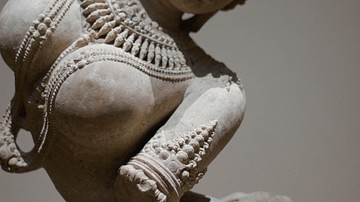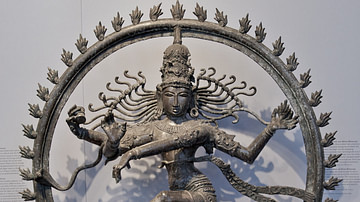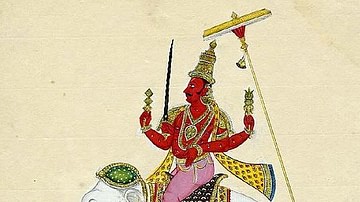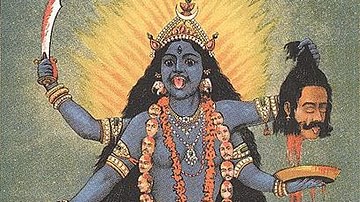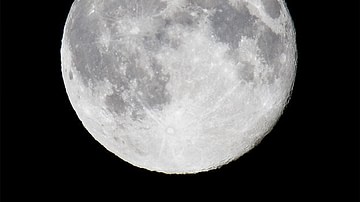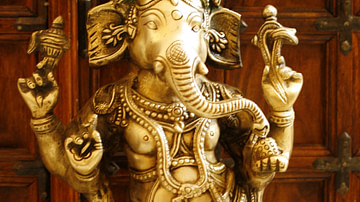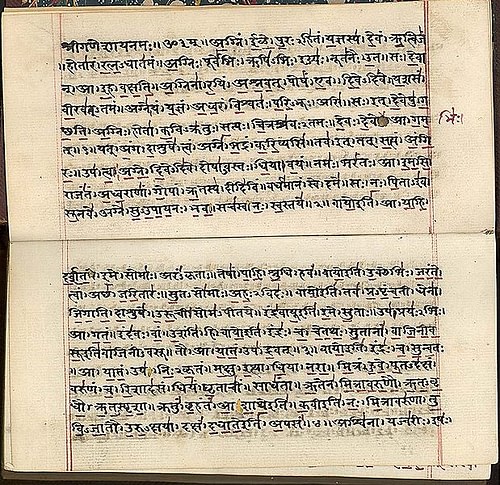
The Vedas are the religious texts which inform the religion of Hinduism (also known as Sanatan Dharma meaning “Eternal Order” or “Eternal Path”). The term veda means “knowledge” in that they are thought to contain the fundamental knowledge relating to the underlying cause of, function of, and personal response to existence.
They are considered among the oldest, if not the oldest, religious works in the world. They are commonly referred to as “scripture”, which is accurate in that they can be defined as holy writ concerning the nature of the Divine. Unlike the scriptures of other religions, however, the Vedas are not thought to have been revealed to a certain person or persons at a specific historical moment; they are believed to have always existed and were apprehended by sages in deep meditative states at some point prior to c. 1500 BCE but precisely when is unknown.
The Vedas existed in oral form and were passed down from master to student for generations until they were committed to writing between c. 1500 - c. 500 BCE (the so-called Vedic Period) in India. They were carefully preserved orally as masters would have students memorize them forwards and backwards with emphasis on exact pronunciation in order to keep what was originally heard intact.
The Vedas are therefore regarded as Shruti in Hinduism meaning “what is heard” as contrasted with other texts designated Smritis (“what is remembered”), accounts of great heroes and their struggles in works such as the Mahabharata, Ramayana, and Bhagavad Gita (although some sects of Hinduism regard the Bhagavad Gita as Shruti). The texts which make up the Four Vedas are:
- Rig Veda
- Sama Veda
- Yajur Veda
- Atharva Veda
Each of these is further divided into types of text included within them:
- Aranyakas - rituals, observances
- Brahmanas - commentaries on said rituals
- Samhitas - benedictions, prayers, mantras
- Upanishads – philosophical narratives and dialogues
The Upanishads are the best known and most often read of the Vedas because their discourse is presented in dialogue/narrative form and they were the first to be translated into other languages. The four Vedas, conversely, are considered the literal sounds of the Divine which, when recited or sung, recreate the primal vibrations of the universe. Accordingly, they are actually impossible to translate and what one reads in a translation should be understood as a paraphrase at best.
Orthodox Hindu denominations recognize the Vedas as a significant spiritual authority but not all Hindu sects follow suit. Reform movements throughout the modern era, beginning in the 19th century CE, place greater value on personal religious experience than scriptural authority and tradition and so some sects, or off-shoots of Hinduism (such as the Brahmos Movement) reject the Vedas entirely as superstition. Even so, the works continue to be recited, studied, and venerated in the present and remain an important part of Hindu religious observances, festivals, and ceremonies.
Early Origin, Dating, & Development
No one knows the origin of the Vedas although many scholars and theologians have advanced differing claims on the subject. It is most commonly believed (though by no means universally accepted) that the Vedic vision came to India by way of nomadic Aryan tribes who migrated there from Central Asia sometime around the 3rd millennium BCE. “Aryan” should be understood as it was by the people of the time, meaning “free” or “noble”, a class of people, not a race, and not Caucasian (as was claimed by 18th- and 19th-century CE Western scholars). These Indo-Aryans are thought to have broken off from a larger group which also included the Indo-Iranians who settled in the region of modern-day Iran and came to be known in the West (via the Greeks) as Persians. Similarities between Early Iranian Religion (and later Zoroastrianism) and early Hinduism suggest a common belief system, which then developed separately.
The Indo-Aryan Migration theory holds that the Vedic vision was developed in Central Asia and brought to India during the decline of the indigenous Harappan Civilization (c. 7000-600 BCE) between c. 2000-1500 BCE, merging that culture's beliefs with their own. Another theory, however, known as Out of India (OIT) claims that the Harappan Civilization had already developed this vision and exported it from India to Central Asia from whence it then returned with the migration of the Indo-Aryans. 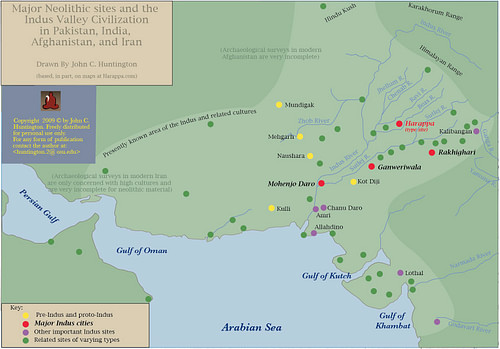
There are sound reasons for recognizing the motivation, at least, for either claim (though the OIT is rejected by mainstream academia) and scholars seem to hold to one or the other more for personal reasons than any based on objective, scholarly research. The most reasonable response to the question of the origin and dating of the Vedas is simply that one does not know. The human need to resolve what appears to be mysterious, however, keeps the debate alive in the present day. Scholars Hermann Kulke and Dietmar Rothermund comment briefly on the early development of the dating/origin issue:
The dating of these texts and of the cultures that produced them has been debated for a long time by Indologists. The famous Indian nationalist, Bal Gangadhar Tilak, wrote a book on the Arctic Home of the Vedas in which he maintained that the Vedas could be dated back to the sixth or fifth millennia BCE. He based his conclusions on the interpretation of references to positions of the stars in the text which could be used by astronomers for a detailed calculation of the respective date. The German Indologist, Hermann Jacobi, independently arrived at a very similar conclusion and suggested the middle of the fifth millennium as the date of the Vedas. But another German Indologist, Max Muller, who was teaching at Oxford, projected a much later date. He took the birth of Buddha around 500 BCE as a point of departure and suggested that the Upanishads, which antedate Buddhist philosophy, must have been produced around 800 to 600 BCE. The earlier Brahmana and Mantra texts of the Vedas would then have been produced around 1000 to 800 and 1200 to 1000 respectively. These dates projected by Max Muller tally very well with modern archaeological research showing at least half a millennium between the decline of the Indus Civilization and the immigration of a new nomadic population which might be identified with the Vedic Indo-Aryans. (34)
Muller's work continues to inform the debate in the present day, and his claims are generally considered the most probable or even certain. Wherever the Vedic vision originated, and however long it existed in oral form, it developed in India during the Vedic Period after the arrival of the Indo-Aryans.
The Vedic Period
The Vedic Period (c. 1500 - c. 500 BCE) is the era in which the Vedas were committed to writing, but this has nothing to do with the age of the concepts or the oral traditions themselves. The designation “Vedic Period” is a modern construct, which relies on evidence of an Indo-Aryan migration, which, as noted, is not universally accepted. Even so, that is the theory most commonly accepted as historically accurate based on the available evidence. The development of the texts is described by scholar John M. Koller:
The Vedic age began when the Sanskrit-speaking peoples began to dominate life and thought in the Indus Valley, probably between 2000 and 1500 BCE. Historians used to think that these Sanskrit-speaking peoples who called themselves Aryans came to the Indus valley in northwest India as conquerors some thirty-five hundred years ago. But recent scholarship has challenged this thesis of conquering Aryans. What we do know is that the earlier Indus culture, which flourished from 2500 to 1500 BCE, and which, judged by its archaeological remains, was quite sophisticated, declined at this time. We also know that the Vedic thought and culture reflected in the Rig Veda has a continuous history of dominance in India during the last thirty-five hundred years. It is likely that the cultural traditions of the Vedic peoples mingled with the traditions and customs of the Indus people. (5)
The religious beliefs of the people of the Harappan Civilization are unknown as they left no written works. Excavations at Mohenjo-daro, Harappa, and other sites suggest a highly developed belief structure which involved ritual bathing and some form of worship service. The only clear evidence of religious belief and practice comes from statuary of the nature spirits known as yakshas which date to before c. 3000 BCE in rudimentary form and continue, with greater refinement, through the 1st century BCE.
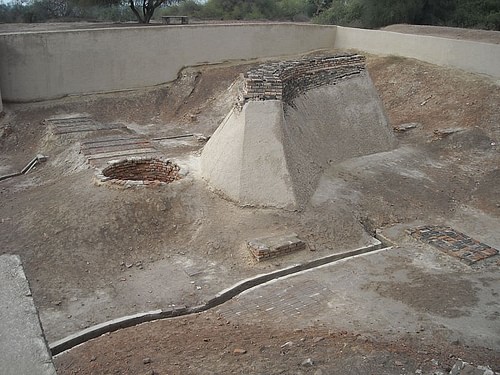
The Yaksha Cults seem to have focused on daily need (if one interprets the evidence along the lines of ancestor cults) as the spirits could be benevolent or malevolent, and sacrifices were made either for favors asked or to ward off harm. As in Asian ancestor cults, there was no emphasis on the “big picture” of where human being came from, what their purpose might be, or where they went after death. These were the questions addressed by the first of the Vedas, the Rig Veda (meaning either “Knowledge of Wisdom”, “Verses of Wisdom” or, literally, “Praise Knowledge”) which informs the other three.
The Vedas
As noted, adherents of Sanatan Dharma (Hinduism) believe the Vedas have always existed. Scholars Forrest E. Baird and Raeburne S. Heimbeck note:
Of all their many sacred texts, Hindus accord supernatural origin only to the Vedas. These four books exclusively are trusted to reveal the essential knowledge of life. Such knowledge, Hindus hold, has existed eternally in the form of vibrations sounding throughout the universe. These elusive vibrations remained undetected until certain Indian sages equipped with spiritual hearing finally heard and formulated them in the Sanskrit language, beginning about 3,200 years ago. (3)
The Vedas, then, are thought to reproduce the exact sounds of the universe itself at the moment of creation and onwards and so take the form, largely, of hymns and chants. In reciting the Vedas, one is thought to be literally participating in the creative song of the universe which gave birth to all things observable and unobservable from the beginning of time. The Rig Veda sets the standard and tone which is developed by the Sama Veda and Yajur Veda while the last work, Atharva Veda, develops its own vision which is informed by the earlier works but takes its own original course.
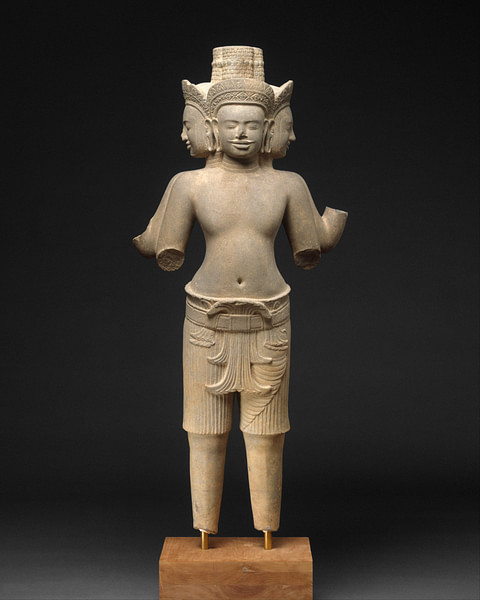
Vedic thinkers asked questions about themselves, the world around them, and their place in it. What is thought? What is its source? Why does the wind blow? Who put the sun – giver of warmth and light – in the sky? How is it that the earth brings forth these myriad life-forms? How do we renew our existence and become whole? Questions of how, what, and why are the beginning of philosophical reflection. (5)
This philosophical reflection characterizes the essence of Hinduism in that the point of personal existence is to question it as one moves from the basic needs of life toward self-actualization and union with the Divine. The Rig Veda encourages these kinds of questions through hymns to various gods – Agni, Mitra, Varuna, Indra, and Soma notably – who would eventually be seen as avatars of the Supreme Over Soul, First Cause, and source of existence, Brahman. According to some schools of Hindu thought, the Vedas were composed by Brahman whose song the sages then heard.
Sama Veda: The Sama Veda (“Melody Knowledge” or “Song Knowledge”) is a work of liturgical songs, chants, and texts meant to be sung. The content is almost wholly derived from the Rig Veda and, as some scholars have observed, the Rig Veda serves as the lyrics to the melodies of the Sama Veda. It is comprised of 1,549 verses and divided into two sections: the gana (melodies) and the arcika (verses). The melodies are thought to encourage dance which, combined with the words, elevates the soul.
Yajur Veda: The Yajur Veda (“Worship Knowledge” or “Ritual Knowledge”) consists of recitations, ritual worship formulas, mantras, and chants directly involved in worship services. Like the Sama Veda, its content derives from the Rig Veda but the focus of its 1,875 verses is on the liturgy of religious observances. It is generally regarded as having two “sections” which are not distinct parts but characteristics of the whole. The “dark Yajur Veda” refers to those parts which are unclear and poorly arranged while the “light Yajur Veda” applies to the verses which are clearer and better arranged.
Atharva Veda: The Atharva Veda (“knowledge of Atharvan”) differs significantly from the first three in that it concerns itself with magical spells to ward off evil spirits or danger, chants, hymns, prayers, initiation rituals, marriage and funeral ceremonies, and observations on daily life. The name is thought to derive from the priest Atharvan who allegedly was well-known as a healer and religious innovator. It is thought that the work was composed by an individual (possibly Atharvan but not likely) or individuals about the same time as the Sama Veda and Yajur Veda (c. 1200-1000 BCE). It is comprised of 20 books of 730 hymns some of which draw on the Rig Veda. The nature of the work, the language used, and the form it takes has caused some theologians and scholars to reject it as an authentic Veda. In the present day, it is accepted by some but not all Hindu sects on the grounds that it deals with later knowledge which is remembered, not the primordial knowledge that was heard.
Embedded in each of these works are the other types mentioned above – the Aranyakas, Brahmanas, Samhitas, and Upanishads – which could be considered glosses, extensions, or commentaries on the actual text.
The Upanishads are considered the “end of the Vedas” as in the last word on the texts. The term Upanishads means to “sit down closely” as a student would with a master to receive some information not intended for the rest of the class. The Upanishads in each of the Vedas comment on the text or illustrate it through dialogue and narrative thereby clarifying difficult or obscure passages or concepts.
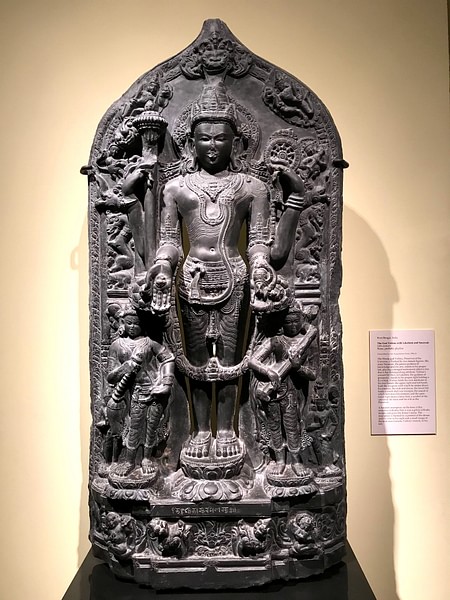
Conclusion
The Vedas, especially the Upanishads, would eventually form the foundational understanding of Sanatan Dharma and provide direction and purpose in the lives of adherents. It came to be understood that there was a single entity, Brahman, who not only created existence but was existence itself. As this entity was too great to be comprehended by human beings, he appeared as avatars such Brahma (the creator), Vishnu (the preserver) and Shiva (the destroyer) as well as a host of other deities all of which were actually Brahman. The purpose of a human life was to recognize one's higher self (the Atman) and perform the dharma (duty) one had been given with the proper karma (action) in order to free one's self from the cycle of rebirth and death (samsara) which was characterized by the suffering and loss one experienced in the physical world. Once an individual had broken these bonds, that person's Atman returned to Brahman and eternal peace.
This belief system developed uninterrupted until the rise of Islam in the north of India beginning in the 7th century CE which became pronounced by the 12th century CE. Islamic rule only gradually came to tolerate Hindu practices. A far more significant threat to the Vedic vision came later in the form of British colonialism and imperialism in the 18th-20th centuries CE. The British tried to convert the Indian people to Protestant Christianity and expended considerable effort in re-educating the populace and dismissing Hinduism as an evil superstition.
This eventually led to a backlash in the form of the Brahmos Movement led by Ram Mohan Roy (l. 1772-1833 CE) and continued by others such as Debendranath Tagore (1817-1905 CE, father of the poet Rabindranath Tagore) who responded, in part, by reimagining their faith to distance it from the traditional form, which seemed to have been corrupted by outside influences. This reimagining included a rejection of scriptural authority and the stature of the Vedas declined. The Brahmos Movement, in fact, rejected the Vedas entirely as superstitious nonsense and focused on a personal experience with the Divine which was actually quite similar to the theological focus of both Protestant Christianity and the earlier Hindu Bhakti Movement of the Middle Ages.
Any Hindu sect or movement in the present day which rejects the Vedas takes its basic platform from the 19th- and early 20th-century CE efforts such as Brahmos. Orthodox Hindus continue to regard the Vedas as highly as in the past, however, and the works continue to be chanted and sung by those who still recognize in them the mystery of an inexpressible truth offered without easy explanation which can be experienced without having to be understood.
